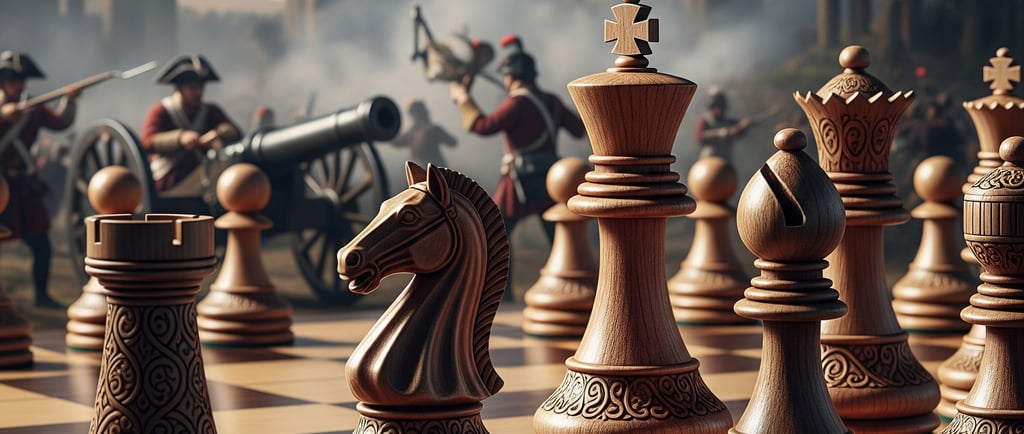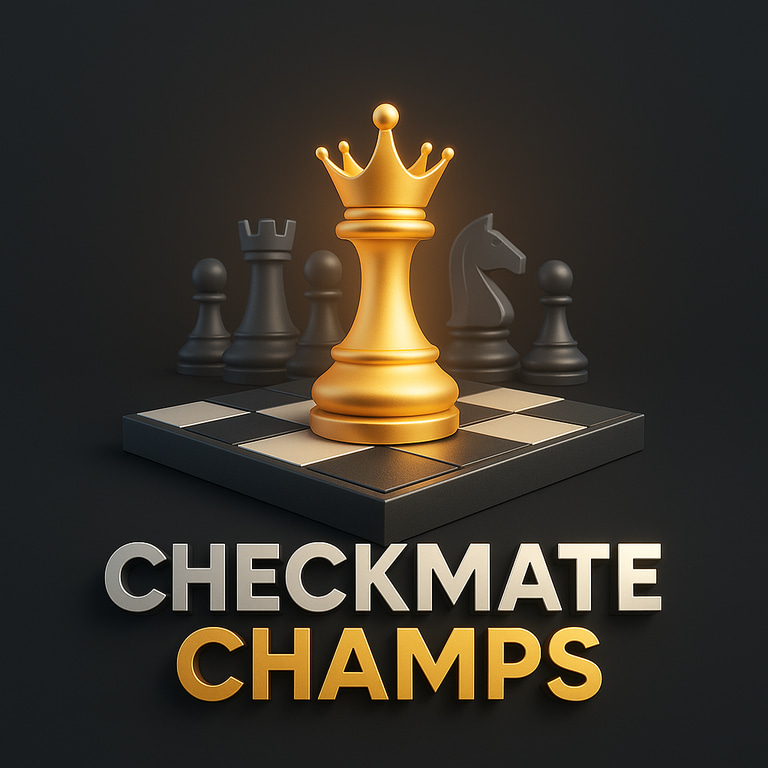Checkmate in Command: How Famous Wars Mirror Chess Strategy
The echoes of grand battles, from ancient skirmishes to modern conflicts, often resonate deeply within the 64 squares of a chessboard. As an ex-Grandmaster, I've always been fascinated by the profound connections between military strategy and the timeless game of chess. Both demand foresight, adaptability, and the ruthless pursuit of an objective. Let's delve into how some of history's most famous wars offer true, real-life examples of core chess strategies in action.
CHESS IDEAS
Checkmate Champs
4 min read


Checkmate in Command: How Famous Wars Mirror Chess Strategy
The echoes of grand battles, from ancient skirmishes to modern conflicts, often resonate deeply within the 64 squares of a chessboard. As an ex-Grandmaster, I've always been fascinated by the profound connections between military strategy and the timeless game of chess. Both demand foresight, adaptability, and the ruthless pursuit of an objective. Let's delve into how some of history's most famous wars offer true, real-life examples of core chess strategies in action.
1. The Napoleonic Wars: The Power of Central Control and Rapid Maneuver
Napoleon Bonaparte, a military genius, understood the importance of controlling the center and rapidly deploying his forces to achieve decisive victories. His campaigns often saw him concentrating his Grand Army to strike swiftly and overwhelm opponents, mirroring the chess principle of central control. By dominating the center of the board, a chess player gains greater influence over the flanks and can more easily transfer pieces to where they are most needed.
Real-Life Example: The Battle of Austerlitz (1805) Napoleon's masterpiece, Austerlitz, perfectly illustrates this. Facing superior numbers, Napoleon deliberately weakened his right flank, luring the Allied forces into a trap. While they focused on this perceived weakness, he unleashed a powerful central thrust that split the Allied army, leading to a crushing defeat for his enemies. This is akin to a chess player sacrificing a pawn or piece on one side of the board to open up lines for a decisive attack on the king in the center.
2. World War II: The Art of Strategic Diversion and Material Advantage
World War II, a conflict of unprecedented scale, showcased the critical role of strategic diversion and the relentless drive for material advantage. Both the Allies and the Axis powers employed tactics to mislead their opponents about their true intentions, while also striving to gain superior resources and positions. In chess, this translates to creating threats on one side of the board to distract the opponent while preparing a decisive attack on the other, or simply accumulating more pieces than your adversary.
Real-Life Example: D-Day and Operation Fortitude (1944) The D-Day landings in Normandy were a monumental undertaking, but their success hinged significantly on "Operation Fortitude." This elaborate deception campaign convinced the Germans that the main Allied invasion would occur at Pas-de-Calais, closer to Germany. By creating a phantom army with inflatable tanks and fake radio traffic, the Allies diverted crucial German divisions away from Normandy. In chess, this is like creating a strong attack on the kingside to draw the opponent's pieces away, only to then launch a decisive breakthrough on the queenside. The material advantage gained by pinning down German forces elsewhere was invaluable.
3. The American Civil War: The Long Game of Positional Play and Blockade
The American Civil War, particularly for the Union, was a long, arduous struggle characterized by positional play and economic blockade. General Ulysses S. Grant's strategy of attrition, combined with the Union's naval blockade (the "Anaconda Plan"), aimed to slowly strangle the Confederacy by cutting off its resources and wearing down its forces. This mirrors a chess strategy where a player gradually improves their position, restricts their opponent's pieces, and grinds down their defenses through superior positional understanding, rather than immediate tactical blows.
Real-Life Example: The Siege of Vicksburg (1863) Vicksburg was a Confederate stronghold vital for controlling the Mississippi River. Grant's long siege, combined with naval bombardment, effectively cut off the city from supplies and reinforcements. After weeks of relentless pressure and no possibility of escape, the Confederate forces surrendered. This is a classic example of positional strangulation in chess – slowly constricting the opponent's forces and limiting their options until their position becomes untenable.
4. The Cold War: The Doctrine of Deterrence and Prophylaxis
While not a "hot" war, the Cold War was a strategic masterpiece built on the concept of deterrence through mutually assured destruction (MAD) and constant vigilance against the opponent's moves. Both superpowers continuously analyzed and countered potential threats, engaging in a global game of "what if." In chess, this is known as prophylaxis – anticipating your opponent's plans and taking steps to prevent them before they become dangerous.
Real-Life Example: The Cuban Missile Crisis (1962) This tense standoff brought the world to the brink of nuclear war. Both the US and the USSR made moves, then counter-moves, constantly assessing the other's intentions and capabilities. The eventual de-escalation was a result of careful, calculated steps designed to prevent the opponent from gaining a decisive advantage and to avoid a catastrophic outcome. This mirrors a chess player constantly asking "What is my opponent planning?" and then making moves not just to improve their own position, but to directly undermine the opponent's potential threats.
From the concentrated assaults of Napoleon to the intricate diversions of D-Day, and the patient blockades of the American Civil War to the tense standoffs of the Cold War, the parallels with chess strategy are undeniable. Understanding these historical connections not only enriches our appreciation for military history but also deepens our strategic thinking on the chessboard.
At Checkmate Champs, we believe in cultivating not just tactical prowess, but strategic mastery. Our weekly and monthly tournaments, meticulously organized in partnership with Book My Show, are your battlefield to put these grand strategies to the test. Join us, develop your command, and carve your own path to victory.
Are you ready to command your forces and achieve checkmate?
Visit checkmatechamps.in today to register for your next tournament and prove your strategic genius!
